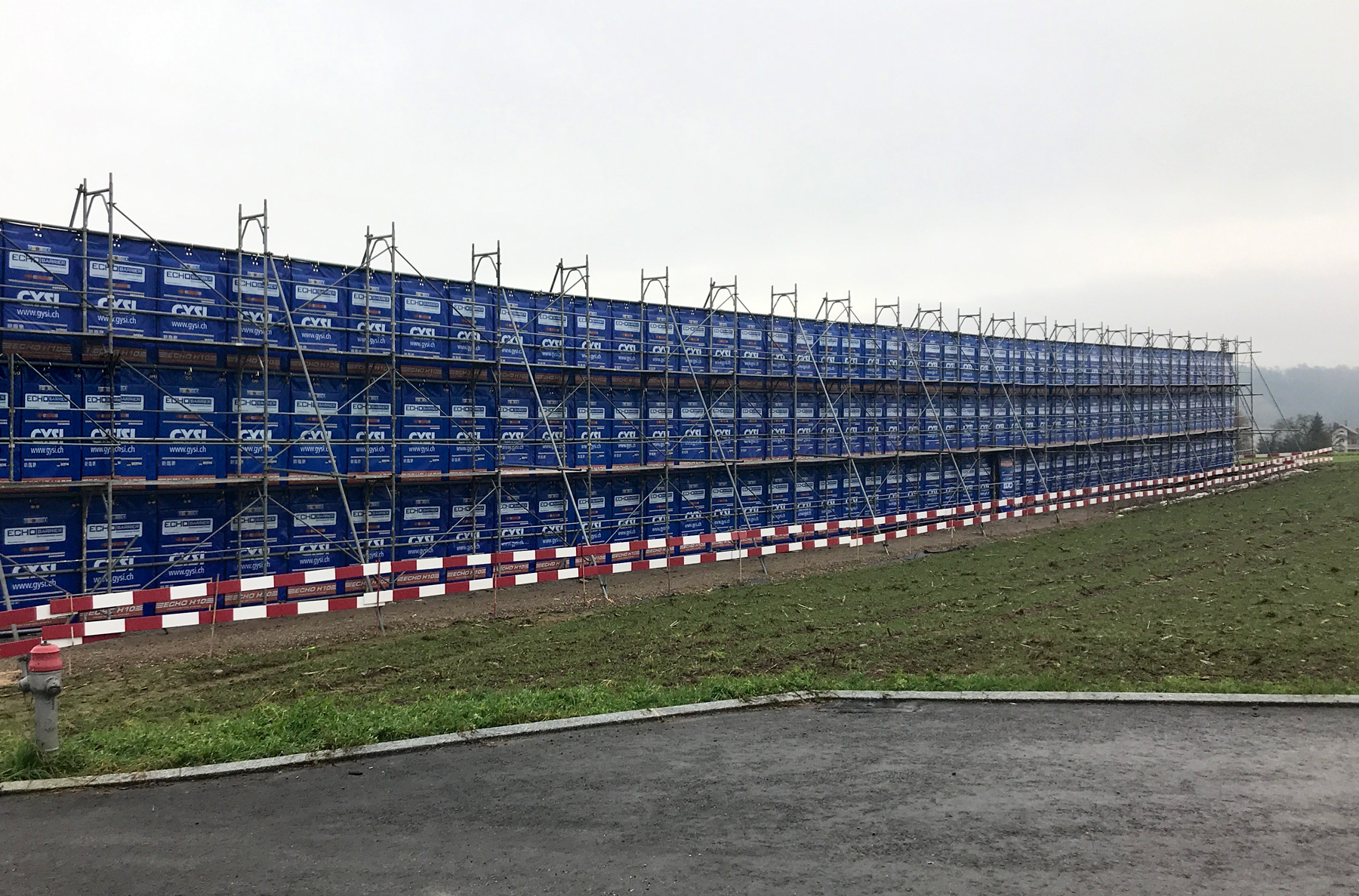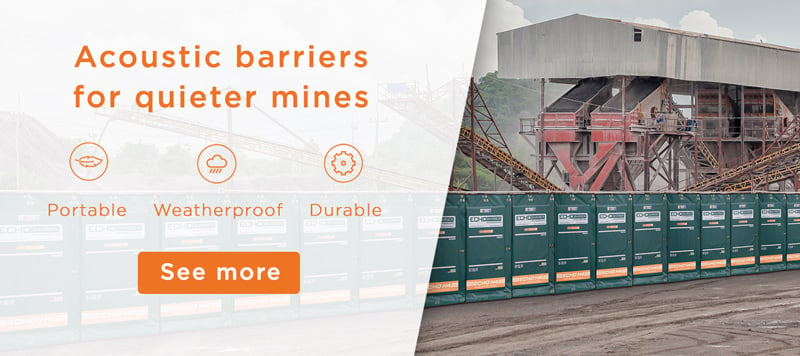
Mining can be a precarious business. Extracting resources is usually a colossal undertaking, often involving the alteration of entire landscapes, and, as such, it requires due preparation for the assessment and mitigation of any hazards that are expected to arise. Noise is one of those inevitable hazards found on a mine site, and is responsible for a host of complications, including the deterioration of worker hearing and the disruption of entire communities.
Noise in mining can come from a whole host of sources across a site, making the hazard difficult to manage. Whether the culprit be processing plants, machinery, traffic, blasting, or otherwise, a mine site is an incessant producer of noise pollution. With some foresight and planning, the adverse impacts that often arise as a result of mine-produced noise pollution can be minimized and efficiently managed.
Why Reducing Mining Noise Is Critical
There are various reasons why noise control on a mine site simply cannot be neglected, including:
1. Regulatory measures
It is the law. Just like in the construction industry, noise must be carefully managed and kept to a minimum as to not disrupt surrounding communities and animal populations.
The planning and prediction of mining noise must be presented as part of a broader Environmental Impact Assessment (see below), and should include intended noise attenuation efforts.
2. Worker safety
There is no excuse in this day and age to not be actively reducing the operational safety and health hazard presented by prolonged noise exposure. Mining workers that spend days, weeks, or even months at a time venturing onto the site among the slew of dangerous noise sources often present at a mine. Noise-induced hearing loss represents a significant economic cost.
3. Maintaining healthy public relations
The most successful mines are often the most inconspicuous ones. A project is much easier to execute and see through to completion when secondary stakeholders are content and undisturbed. Keeping a relatively quiet and inconspicuous site makes the public relations team’s job much easier and results in happier secondary stakeholders and, ultimately, a more cost-effective operation.
Environmental Impact Assessment
The effects of noise in prospective mining operations form a key part of any Environmental Impact Assessment (EIA). An EIA provides stakeholders with important information of the potential environmental risks and public health hazards posed by the development of the mine as well as plans to mitigate them, taking into careful consideration the viability of the mining project.
These risks and hazards threaten habitat loss, surface water and groundwater quality, air quality, erosion, soil quality, as well as social impacts such as traffic congestion, cost-benefit, and, of course, noise pollution.
How Loud is Mining Noise?
This depends on a range of environmental factors that determine the perceived “loudness” of a sound at a particular point of reception. These include obvious things like distance from the sound source to the sound receiver and the topology and physical characteristics of the surrounding landscape, but there are also more subtle factors at play, such as wind direction, humidity levels, and underlying ambient sound level that might be discreetly augmenting the overall noise.
It also depends on the equipment being used. Some examples of mining equipment and locations and their noise levels from operators' positions:
- Drills: 116 dBA
- Muckers: 107 dBA
- Load haul dump: 101 dBA
- Miners/loaders: 100 dBA
- Longwalls: 98 dBA
- Shuttle cars: 93 dBA
All these noise levels are considered to be in the dangerous range, where exposure should be carefully measured and managed. Other examples of noise sources on mines include moving sources like dozers and stationary sources such as belt conveyors.
Read: Noise Levels In Underground & Surface Mines
Who is Affected by Mining Noise?
Workers
Because of their proximity to the noise sources, the workers are almost always most susceptible to the dangers of noise exposure at a mine. Some mines may be sufficiently isolated as to not cause harm to the general public, but workers will invariably find themselves in the line of fire.
The health effects of noise exposure have long been documented, particularly in occupational settings. It is considered that from about 85-90 dB, unprotected exposure can result in permanent hearing damage; the louder the noise level, the less time that exposure can be withstood. For example, the OSHA (the Operational Safety & Health Administration) set a maximum recommended exposure to 85 dbA over an 8-hour time-weighted average without hearing protection, while at 115 dBA, a person can only withstand 15 minutes of exposure before facing irreversible hearing damage.

The Public
Mines are often located out of the way, far from the public eye and ear. However, those that are found closer to civilization can be painfully obtrusive, emitting noise around the clock that can cause disruption to the lives of civilians living in the vicinity. Noise pollution can cause anxiety, agitation, and make it difficult to concentrate, and can even impair the cognitive, physical, and behavioural development of children.
Wildlife
These subtle stakeholders are overlooked too often. A large project can already displace whole populations of animal species, and that’s before we even take into consideration the far-reaching impact of noise on the local biodiversity.
The presence of noise from mines in the wild can impair the ability of animals to perceive the approach of predators, resulting in high kill rates and reduced population. The noise can also result in the forced migration of species, causing an imbalance in the ecosystem.
The Organization
Employers have a duty of care to provide a working environment that is, as practicably as possible, free from hazards, which includes noise hazards and the prevention of noise-induced hearing loss for workers, while also remaining inconspicuous to the general public. Failure to provide optimal conditions for all stakeholders can be costly for the mining organization in bad publicity, project delays, and litigation.
Reducing Noise On a Mine Site
Workers are the most vulnerable stakeholders when it comes to noise exposure in mining.
Personal protective equipment (PPE) is the most effective measure against preventing hearing damage on a personal level, however this does not address the wider issue of noise pollution projecting across the site and beyond its limits.
Instead of focusing on only targeting personal hearing protection, engineering measures should be implemented in order to reduce noise emissions sitewide entirely.
Engine Enclosure & Cabin Soundproofing
As previously noted, large vehicles produce a dangerous level of noise emissions. Much of this stems from the engine compartment of the vehicle. Sound-absorbent material can be used to line the cabin of the vehicle as well as the engine enclosure itself to absorb the noise close to the source, protecting both the vehicle operator as well as other noise receivers site-wide.
The effectiveness of the soundproofing of the enclosure depends on the specific material used and how air-tight the enclosure is (some air gap should always exist to allow for sufficient engine cooling).
Acoustic Barrier Walls
A more effective means of minimizing noise emissions across a site is the deployment of acoustic barrier walls. Acoustic barriers are a commonly implemented engineering solution deployed by mining companies to screen noise sources and entire segments of mines. They can interrupt the direct path from the sound source to the receiver/s. For maximum effectiveness, they should be installed as close as possible to either the noise source or receiver, and be built as tall and wide as possible so as to extend beyond the source-receiver noise path.

An Echo Barrier noise wall is relatively easy to assemble to achieve a considerable level of noise reduction.
Echo Barriers are an innovative type of acoustic barrier designed for use on industrial worksites where they remain effective despite extreme weather and site conditions. With a modular design, they form a highly-portable noise control solution, combining lightweight composition, certified durability (for fire, water, UV, and smoke resistance), and acoustic performance to bring market-leading noise mitigation technology across a mine.
Each individual Echo Barrier measures 2030 x 1335 mm and can be arranged in a wide variety of configurations. Using scaffolding and an array of Echo Barriers, an entire noise wall can be built to screen large sections of a mine, such as a roadway or a processing plant, attenuating the noise level. This is a cost-effective alternative to building perimeter walls from bulkier materials, which are more costly and slower to install, relocate, and remove.
Echo Barriers absorb up to 100% of airborne noise energy (around the 400 Hz range and above), while providing up to 30 dB of noise reduction of mining noise (with a theoretical possibility of a 43 dB reduction). During installation, they can also be double-layered to further reduce noise.
Low Frequency Noise & Vibration
Unfortunately, acoustic barriers are not very effective at reducing noise below 400 Hz. This would require a material with significantly greater mass, and even then, the lowest frequencies are transmitted as structure-borne noise (between 20 Hz and 200 Hz), which is practically impossible to remedy with engineering measures, and should be handled through effective operational management.
Accurately Monitoring Mining Noise
Because stringent noise regulations apply to mining operations, the undertaking of accurate noise monitoring on a mining site is essential to legal compliance, according to project approvals and relevant legislation. It is useful to outline a Noise and Vibration Management plan; here is a fantastic example from Austar.
There are two main types of noise monitoring methodologies that should be used in conjunction with one another to best assess noise emissions on a mine.
Attended Noise Monitoring
This methodology allows for the most accurate determination of the contribution of specific mining activities to the overall noise level. This might occur on a monthly basis and is key in determining compliance.
Continuous Unattended Noise Monitoring
It is generally a requirement to continuously assess site noise levels at certain receiver points. Because there can be noise emissions unrelated to mining operations or construction during real-time monitoring, it cannot be used to determine compliance.
A mobile continuous noise monitor should be used to take readings and record important data like:
- date and time
- LAeq, LCeq and LAeqLF (20‐630 Hz) for each 15 minute interval;
- LAmin, LAmax, LApeak, L1, L10 and L90 for each 15 minute interval;
- LAeq,period (where period = day, evening and night) for each 24 hour interval;
- maximum LA1 ,1 minute noise level recorded over a randomised 15 minute night time measurement period;
- weather data monitoring to account for meteorological impact on noise levels;
- live streaming of audio and continuous MP3 recording for subsequent playback.
Equipment
There are a variety of sophisticated sound level meters available on the market that are ideal for capturing noise information on mines. There are several categories of sound level meter based on the required manner and duration of the noise measurement.
Sound Level Meters for Continuous, Unattended Noise Monitoring
Mines may remain active for many years. In these cases, the equipment used to continuously monitor noise levels should also be able to stand the test of time and durability. A permanent noise monitoring system like the SoundAdvisor NMS045 includes features like a fiberglass enclosure, a fixed pole for long-term stability, and continuous power capabilities.
Sound Level Meters for Attended Noise Monitoring
For attended noise monitoring, a rugged but portable sound level meter with accuracy will help provide those critical measurements that demonstrate mining noise compliance. The CR17 Optimus Green provides you with key features such as simultaneous measurement & data logging of all available parameters, simultaneous A, C & Z frequency weightings, and single 120dB measurement range.

